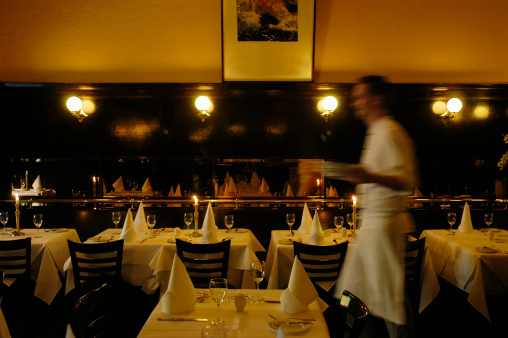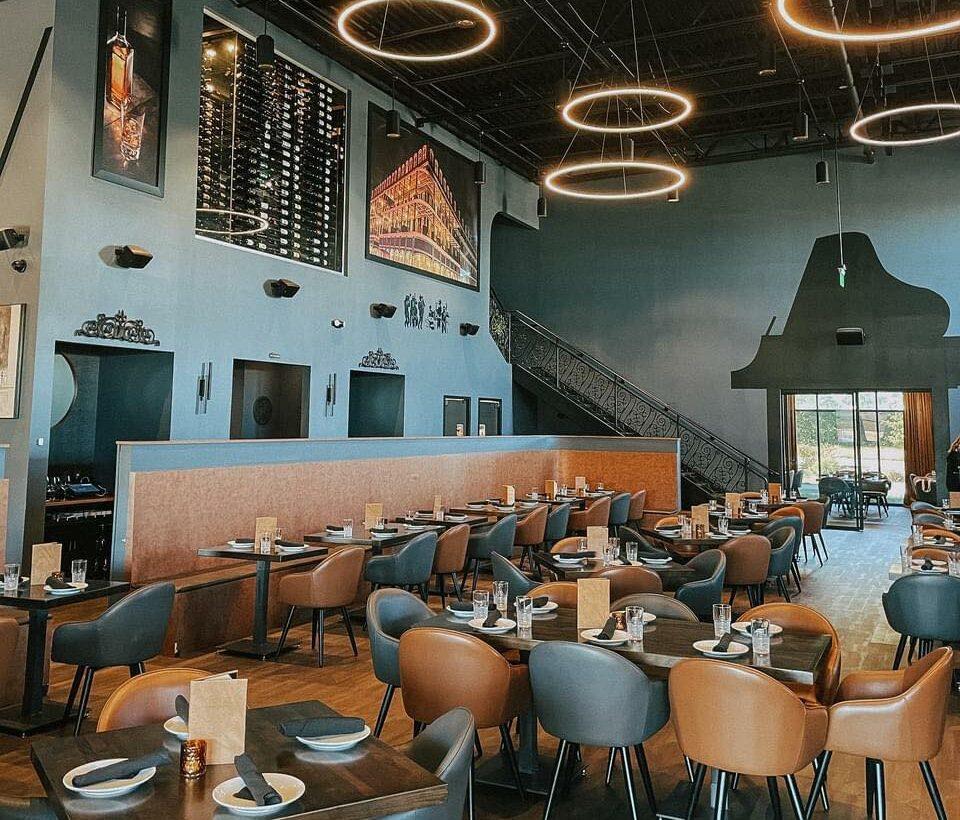Pan Asian Restaurant Islamabad: Discover Exquisite Asian Food
Wiki Article
Savor Authentic Eastern Food With a Pan-Asian Spin for a Culinary Experience
Getting started on a culinary trip with authentic Oriental cuisine, improved with a Pan-Asian spin, uses an one-of-a-kind chance to explore the abundant tapestry of flavors that define the region's diverse culinary customs. As you contemplate these enticing recipes, consider the cultural stories and historic impacts that shape them, each bite offering a story waiting to be uncovered. asian fusion restaurant.
Exploring Pan-Asian Flavors
In the world of global gastronomy, Pan-Asian cuisine stands out for its exceptional variety and the harmonious interplay of tastes from numerous Asian cultures. This cooking approach celebrates the abundant traditions and special active ingredients located throughout the continent, creating a tapestry of tastes that is both rewarding and appealing. Trick to Pan-Asian food is its ability to balance different tastes-- pleasant, salted, spicy, and sour-- while highlighting the quality and top quality of each ingredient.From the umami-rich soy sauce of Japan to the fiery chili peppers of Thailand, Pan-Asian cuisine uses an extensive palette of flavors. These elements are typically integrated in creative ways, enhancing meals with layers of complexity. As an example, using fragrant herbs such as lemongrass and cilantro, common in Vietnamese and Thai cuisine, includes a revitalizing illumination to dishes, while the incorporation of coconut milk provides a creamy, abundant structure.
The emphasis on fresh fruit and vegetables and fragrant spices makes sure that each dish is not only a banquet for the taste however also for the senses. Pan-Asian cuisine welcomes restaurants to embark on a cooking trip, discovering the substantial and varied landscapes of Eastern gastronomy with every bite.
Combination Dishes to Attempt
While Pan-Asian cuisine is commemorated for its conventional tastes, the modern-day culinary landscape is progressively accepting fusion dishes that mix these timeless elements with influences from various other regions. This ingenious method not just honors the rich heritage of Asian cookeries however likewise presents novel taste experiences that interest contemporary tastes buds.
An archetype of such a blend dish is the Korean-Mexican taco, where seasoned bulgogi beef is covered in a cozy tortilla, topped with kimchi and a zesty gochujang-infused salsa. This mix weds the bold, tasty flavors of Korea with the vivid, fresh components of Mexican food. Likewise, sushi burritos have obtained popularity, amalgamating the fragile virtuosity of Japanese sushi with the hearty, hand-held convenience of a burrito, frequently including combination active ingredients like tempura shrimp and avocado with a drizzle of wasabi mayo.
Another significant recipe is Thai curry ramen, which instills the creamy, aromatic flavors of Thai curry into the reassuring brew of conventional Japanese ramen, creating a harmonious blend that entices the senses. These fusion meals prolong beyond plain uniqueness; they represent a culinary discussion between cultures, motivating expedition and development in the world of Pan-Asian cuisine.
Necessary Ingredients and Seasonings
To absolutely appreciate Pan-Asian cuisine, one need to recognize the necessary components and flavors that create its foundation. This diverse cooking style draws from an abundant tapestry of Oriental practices, utilizing a harmonious blend of appearances and tastes. Key ingredients include soy sauce, fish sauce, and oyster sauce, which pass on a tasty umami depth necessary to Oriental meals. Corresponding to these are rice vinegar and mirin, lending a fragile acidity and sweet taste.Fragrant elements are essential, with ginger, lemongrass, and garlic being common throughout various Pan-Asian dishes. These ingredients give a fragrant base that enhances the complexity of flavors. Spices such as celebrity anise, cardamom, and cinnamon introduce warmth and personality, resembling influences from regions like China and India.

Cooking Methods and Tips
Understanding the art of Pan-Asian food needs familiarity with its unique food preparation strategies, each adding to the vibrant tapestry of tastes this cooking custom is commemorated for. Central to these techniques is the stir-fry, a quick food preparation technique that preserves the dietary honesty and dazzling colors of active ingredients. Using a wok, the stir-fry approach allows for even heat circulation, crucial for accomplishing the characteristic structure and taste balance of Pan-Asian meals.An additional basic strategy is steaming, particularly prevalent in Chinese food. This gentle technique preserves the natural flavors and nutrients of ingredients, making it perfect for fish and shellfish and veggies. Dumplings, a precious staple, typically take advantage of steaming, resulting in soft, delicious appearances.
Barbecuing, likewise essential, gives smoky depths to recipes such as Oriental bulgogi or Japanese yakitori (pan asian dining Islamabad). This technique often involves marinading active ingredients, permitting flavors to penetrate deeply prior to food preparation over an open fire or warmer
Finally, grasping the art of balancing tastes-- sweet, sour, salted, bitter, and umami-- is vital. Appropriately layering these components can boost a meal from normal to extraordinary, supplying a complex and pleasing culinary experience that embodies the significance of Pan-Asian cuisine.
Dining Experiences Worldwide
Around the world, Pan-Asian cuisine supplies an unequaled eating experience, celebrated for its abundant tapestry of tastes and vibrant presentations. This cooking sensation has transcended social borders, capturing the hearts and tastes buds of food fanatics worldwide. In cosmopolitan cities like New York, London, and Sydney, Pan-Asian restaurants act as fusions where cooking traditions from Thailand, Japan, China, and beyond assemble, giving diners with an eclectic mix of meals that highlight the area's variety.The international allure of Pan-Asian cuisine lies in its capacity to provide both credibility and development. Cooks masterfully marry typical ingredients such as lemongrass, soy sauce, and miso with modern strategies, leading to recipes that are both familiar and refreshingly new. This combination enables restaurants to get started on a cooking journey that values heritage while welcoming modernity.
In addition, eating asian fusion restaurant experiences are elevated through attentively created atmospheres that reflect the ethos of Pan-Asian looks. From minimalist Japanese-inspired interiors to vivid Thai-themed areas, each restaurant offers an one-of-a-kind setting that enhances the culinary offerings. Consequently, patrons are not just taking in a meal yet partaking in a social experience, making Pan-Asian dining an absolutely worldwide phenomenon.
Verdict
The exploration of Pan-Asian food provides an extensive understanding of the intricate interaction of flavors and culinary customs across Asia. By accepting blend meals such as Thai curry ramen and sushi burritos, the culinary journey not just highlights the versatility of conventional components but likewise showcases ingenious modern-day techniques. This gastronomic journey, enriched by cooking approaches and necessary flavors, supplies an one-of-a-kind possibility to appreciate the multiculturalism and cooking artistry that define Pan-Asian food on a global scale.Getting started on a culinary journey with genuine Asian cuisine, boosted with a Pan-Asian twist, provides an one-of-a-kind possibility to explore the rich tapestry of flavors that define the area's varied cooking traditions.In the realm of worldwide gastronomy, Pan-Asian food stands out for its remarkable diversity and the unified interaction of tastes from various Oriental societies. Key to Pan-Asian food is its capacity to stabilize contrasting flavors-- wonderful, salted, spicy, and sour-- while highlighting the freshness and high quality of each active ingredient.

Report this wiki page